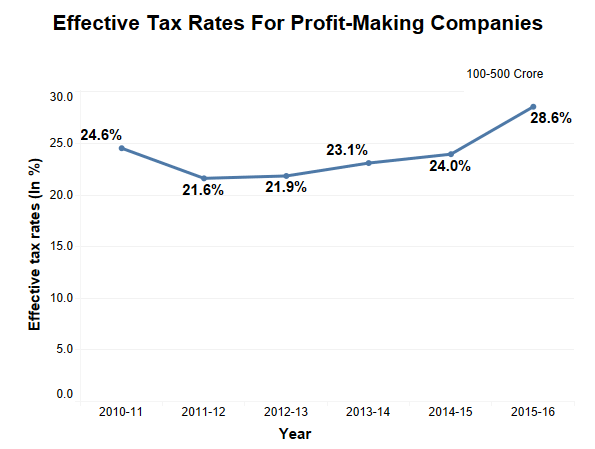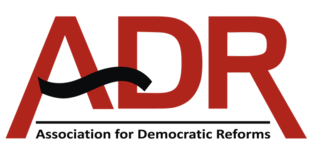Tax incentives allowed 15,080 profit-making Indian companies to have effective tax rates of zero, and in some cases less than zero, in 2015-2016, according to an IndiaSpend analysis of the latest available national tax data or more specifically a government analysis called the Revenue Impact of Tax Incentives under the Central Tax System.
The Central government introduced the minimum alternate tax in the late 1980s to tackle this anomaly, but even it has exemptions that appear to have negated its original intent partially: 52,911 companies made profits in 2014-2015 and paid no tax, IndiaSpend reported in March 2016.
Larger corporates, lower tax rates
Effective tax rate is the tax rate actually paid by companies on profits, calculated as tax actually paid divided by profits before tax. While effective tax rates rose between 2012-2013 and 2015-2016, many exemptions remain, especially for larger companies.
For instance, corporates have a statutory tax rate of 34.4%, which they must pay on profits. The effective tax rate in 2015-2016 was 28.2%, higher than it was in 2014-2015 (24.6%).
The effective tax rate for a company making a profit of up to Rs 1 crore was 30.2% in 2015-2016 while the corporate tax rate was 25.9% for those with profits greater than Rs 500 crores.








This means companies making smaller profits are competing in an unequal environment against bigger companies with substantial taxation benefits even though the gap in effective tax rates has been narrowing over the years.
Effective tax rates vary
The effective tax rates of the lowest paying industries (cement, sugar, financial leasing companies), which were in single digits in 2014-2015, have increased substantially and all are touching nearly 20%.
These sectors, however, continue to be taxed at lower rates than other industries.
There are interesting contrasts on tax rates of different industries in the same sector:
1. Banking companies paid tax at 40.3% while share brokers/sub-brokers paid tax at 25.1% (both financial services).
2. Courier agencies paid tax at 41.7% compared to transporters who paid tax at 26.4% (both services).
3. Forest contractors paid tax at 37.6% while mining contractors paid tax at 28.2% (both contractors).
4. Drugs and pharmaceuticals paid tax at 24.2%, electronics paid tax at 35.5% (both manufacturing).
“The plan for phasing out of exemptions will kick in from April 1, 2017,” Finance Minister Arun Jaitley said in his 2017-2018 Budget speech.

The government provided the corporate sector Rs 76,857.7 crores in tax breaks or exemptions in 2015-2016. The biggest tax exemption is the deduction on expenditure for scientific research (including for seeds and other biotech purposes), which allows for exemption that is twice the expenditure incurred and export profits of units in special economic zones.
The government also provided customs duty exemption of Rs 69,259 crores and Rs 79,183 crores for excise duty in 2015-2016.
Over 46% of companies did not make profit

As many as 43% of Indian companies made losses, 3% companies made no profit and 47.7% of companies made profits up to Rs 1 crore in 2015-2016.
About 6% of India’s companies recorded profits in excess of Rs 1 crore, according to the tax data.
Contribution by corporates to political parties shows variance compared to reporting by political parties to Election Commission for 2015-2016
The deductions granted on account of contribution by corporates to political parties has declined from Rs 112 crores in 2014-2015 to Rs 14 crores in 2015-2016, according to tax data.
This is in contrast to the data submitted by parties to the Election Commission.
Donations received by political parties in excess of Rs 20,000 was Rs 576 crores in 2014-2015 and Rs 77.3 crores in 2015-2016, according to data from the Association for Democratic Reforms, an advocacy.
One possible explanation for the variance could be under-reporting by corporates.






